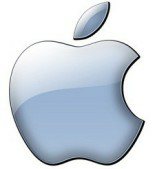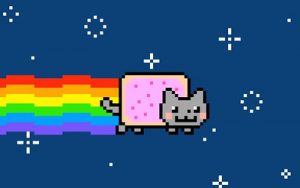9.4. Patents and Trademarks
Patents are another important form of intellectual property protection. A patent creates protection for someone who invents a new product or process. The definition of invention is quite broad and covers many different fields. Here are some examples of items receiving patents:
- circuit designs in semiconductors;
- prescription drug formulas;
- firearms;
- locks;
- plumbing;
- engines;
- coating processes, and
- business processes.
Through a patent, the government gives an inventor the right to stop others from making, using or selling your invention from the day the patent is granted to a maximum of 20 years after the day on which you filed your patent application. However, in exchange, one must provide a full description of the invention so that all Canadians can benefit from this advance in technology and knowledge. Patent applications are typically open to public inspection from 18 months from the filing date. Therefore, people may then read about another’s invention, though they cannot make, use or sell it without the patent holder’s permission.
The rights given by a Canadian patent extend throughout Canada but not to other countries. An inventor must apply for patent rights in other countries separately. Likewise, foreign patents do not protect an invention in Canada (Canadian Intellectual Property Office, 2020).
Obtaining Patent Protection
Unlike copyright, a patent is not automatically granted when someone has an interesting idea and writes it down. A patent application must be submitted to the Canadian Intellectual Property Office (CIPO). A patent will only be granted if the invention or process being submitted meets certain conditions. There are three basic criteria for patentability—novelty, utility and inventiveness:
| Novelty | To be granted a patent, the invention (door lock) must be original, that is first of its kind in the world. |
| Utility | A valid patent cannot be obtained for something that does not work or that has no useful function. The door lock must work. |
| Inventiveness | To be patentable, the invention must be a new development or an improvement of an existing technology that would not have been obvious to someone working in the area of specialty. The door lock must add an improvement to the field of door locks. |
What Is a Patent Troll?
The advent of digital technologies has led to a large increase in patent filings and therefore a large number of patents being granted. Once a patent is granted, it is up to the owner of the patent to enforce it. If someone is found to be using the invention without permission, the patent holder has the right to sue to force that person to stop and to collect damages.
The rise in patents has led to a new form of profiteering called patent trolling. A patent troll is a person or organization who gains the rights to a patent but does not actually make the invention that the patent protects. Instead, the patent troll searches for those who are illegally using the invention in some way and sues them. In many cases the infringement being alleged is questionable at best. For example, companies have been sued for using Wi-Fi or for scanning documents, technologies that have been on the market for many years.
The License on Transfer (LOT) Network is a global organization working collaboratively to reduce the risk of lawsuits from patent trolls.
Trademark

A trademark is a word, phrase, logo, shape or sound that identifies a source of goods or services. For example, the Nike “Swoosh,” the Facebook “f”, and Apple’s apple (with a bite taken out of it) are all trademarked. The concept behind trademarks is to protect the consumer. Imagine going to the local shopping center to purchase a specific item from a specific store and finding that there are several stores all with the same name!
Registering your trademark with the Canadian Intellectual Property Office (CIPO) registrar protects your rights in Canada only. If one wishes to market goods or services in other countries, trademark registration must be done in that country (Canadian Intellectual Property Office, 2021).You can use CIPO’s Canadian Trademarks Database to access over 140 years of Canadian trademark data. You can search and study more than 1.4 million Canadian trademarks. That includes all active and inactive marks that were cancelled, expunged, abandoned or refused after 1979.
There are two types of trademarks – an ordinary trademark and a certification trademark.
| Ordinary trademark | includes words, designs, tastes, textures, moving images, mode of packaging, holograms, sounds, scents, three-dimensional shapes, colours, or a combination of these used to distinguish the goods or services of one person or organization from those of others. For example, suppose you started a courier business that you chose to call Giddy-up. You could register these words as a trademark (if you met all the legal requirements) for the service that you offer. |
| Certification mark | can be licensed to many people or companies for the purpose of showing that certain goods or services meet a defined standard. For example, the Woolmark design, owned by Woolmark Americas Ltd., is used on clothing and other goods. |
While most any word, phrase, logo, shape, or sound can be trademarked, there are a few limitations. You cannot register a trademark if it includes the following:
- Names and surnames
- Clearly descriptive marks
- Deceptively descriptive marks
- Place of origin
- Words in other languages
To learn more go to CIPO’s trademarks guide.
What are Non-fungible Tokens (NFTs) ?

NFTs provide a way to limit digital items from being duplicated – making them unique. NFTs tokenize digital files by creating a digital certificate on the blockchain (more about that in Chapter 10) so that they are unique and owned and cannot be reproduced like other digital files.
While NFT’s can be used to protect original works of art; they can also be linked to video’s, images, lines of code or any digital asset. An NFT of digital artist Beeple’s Everydays: the First 5000 days collage sold at auction for more than $69 million making it the third most expensive artwork ever sold by a living artist. Nyan Cat (see image), an iconic GIF of a cat with a Pop-Tart for a torso flying through space, sold for nearly $600,000.
“Chapter 12: The Ethical and Legal Implications of Information Systems” from Information Systems for Business and Beyond (2019) by David Bourgeois is licensed under a Creative Commons Attribution-NonCommercial 4.0 International License, except where otherwise noted.
“Non-Fungible Tokens, Ownership of Digital Objects, and Copyright” by Authors Alliance is licensed under a Creative Commons Attribution 4.0 International License except where otherwise noted.

